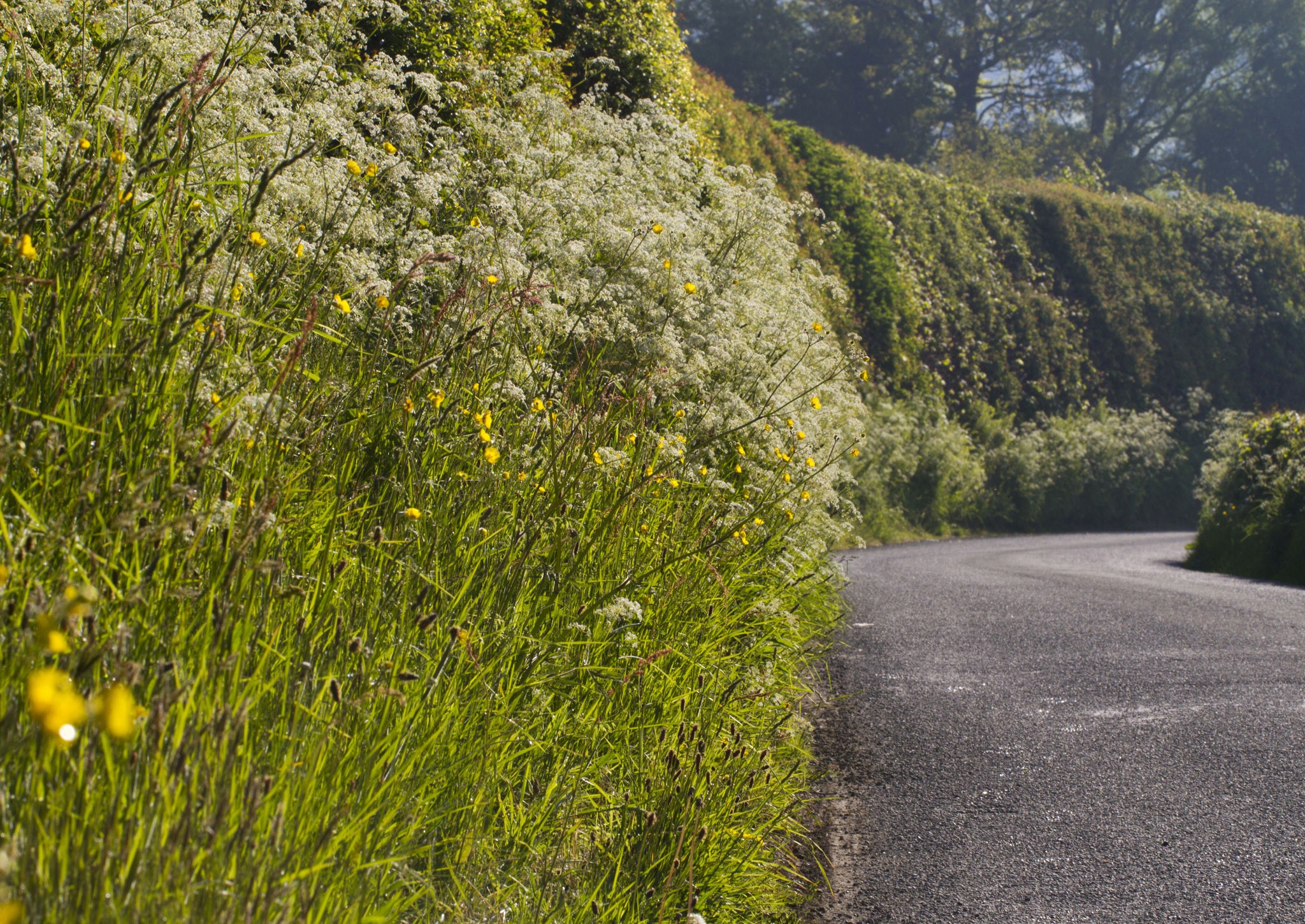Cow parsley: the countryside killer
The white flowers may make English country lanes look pretty, but in reality they are killing other wild plants

There’ll always be an England, the song went in the last war, while there’s a country lane… but it’s funny how those country lanes won’t always look the same. And it’s funny how a huge and damaging change in the natural world can look quite attractive, until you find out what it really means…
If you go for a drive down a country lane in much of Britain right now, you will find many of them fringed on each side by a sort of 3-4ft-high flower hedge, a foaming froth of tiny white blooms, held on umbrella-like stalks. This is cow parsley, a member of the umbelliferae or carrot family; and although its English name will win no prizes for charm – more fastidious souls prefer to call it Queen Anne’s lace – its lace-like appearance, which it does indeed possess, has always been extremely decorative of our roadside verges.
This year, however, it seems to me to be denser than ever – driving down lanes in Hampshire and Dorset earlier this month I noticed that many verges were simply engulfed by an overwhelming amount of the plant, which looked pretty enough, but there was not very much growing of anything else at all. And my feeling that it seems to be taking over along roadsides was strengthened last week, when I spent a few days driving around very similar lanes across the Channel in Normandy.
Over there, although cow parsley was everywhere present, it was nowhere wholly dominant as it now is in so many places here. Instead, the verges of the French country byways were displaying a very attractive diversity of spring flowers, with species such as comfrey, ox-eye daisy, stitchwort, crosswort and in particular, early purple orchids, just as common as Anthriscus sylvestris, or more so.
Isn’t this, with a panoply of different flowers, how the sides of country lanes used to look in Britain? And isn’t cow parsley a lot more ubiquitous than it used to be? That was just my impression, but I wasn’t sure, until I spoke to a couple of leading botanists.
Simon Smart, from the Centre for Ecology and Hydrology in Lancaster, dug out some fascinating figures from the Countryside Survey, the enormous census of the habitats and vegetation of rural Britain that the Government carries out every 10 years. These made it clear that cow parsley is very much undergoing a boom.
On monitored plots along linear landscape features such as road edges, the survey found, between 1978 and 2007 the plots in which cow parsley occurred increased in Britain from 129 to 204 (a 58 per cent increase) and in England only, from 100 to 153 (a 53 per cent increase).
“I would say that’s pretty substantial,” Smart said. “These figures are an indication of geographical spread, but they’re also consistent with increased abundance where the plant occurs.”
To put it simply, there’s more than half as much again of the stuff, along the sides of our country lanes, as there was 30 years or so ago. But why is it happening? There seem to be two reasons: the way we manage roadside verges today, and the increased fertility of the landscape as a result of intensive farming.
In the past, Smart said, verges were often grazed by farm animals, or they were cut for hay, and the grass and other plants, once mown, were taken off. Now they are mown by local councils, and the mowings are merely left in place, which adds nutrients to the soil and makes it more fertile. And soil fertility is being increased further by the huge amounts of fertilisers farmers now add to the landscape, and even by motor vehicle exhausts, which add their own nutrients to roadside verges in the form of oxides of nitrogen.
This is bad news for many plants, since a lot of our wild flowers – counter-intuitive though it may seem – need infertile soil to flourish. Otherwise a few big robust plants will outcompete everything else.
The result, says Kevin Walker, head of research at the Botanical Society of Britain and Ireland, has been winners and losers. Over the last half-century, a small number of bigger plants have done very well, while a large number of smaller, more specialised plants have lost out.
The biggest winner has probably been the nettle, said Walker, which is now the most common plant in Britain. The bramble is another such. And cow parsley is a third, a big plant which thrives on nutrient-rich ground, and doesn’t let other species get a look in.
So when you next drive down an English country lane, look on the feathery white flower border of springtime with a more jaundiced eye. It might look pretty; it does look pretty; but for all that, it’s a monoculture, and it’s giving us many roadside verges, once fascinating for their flora, that have now become one-dimensional.
Join our commenting forum
Join thought-provoking conversations, follow other Independent readers and see their replies
0Comments